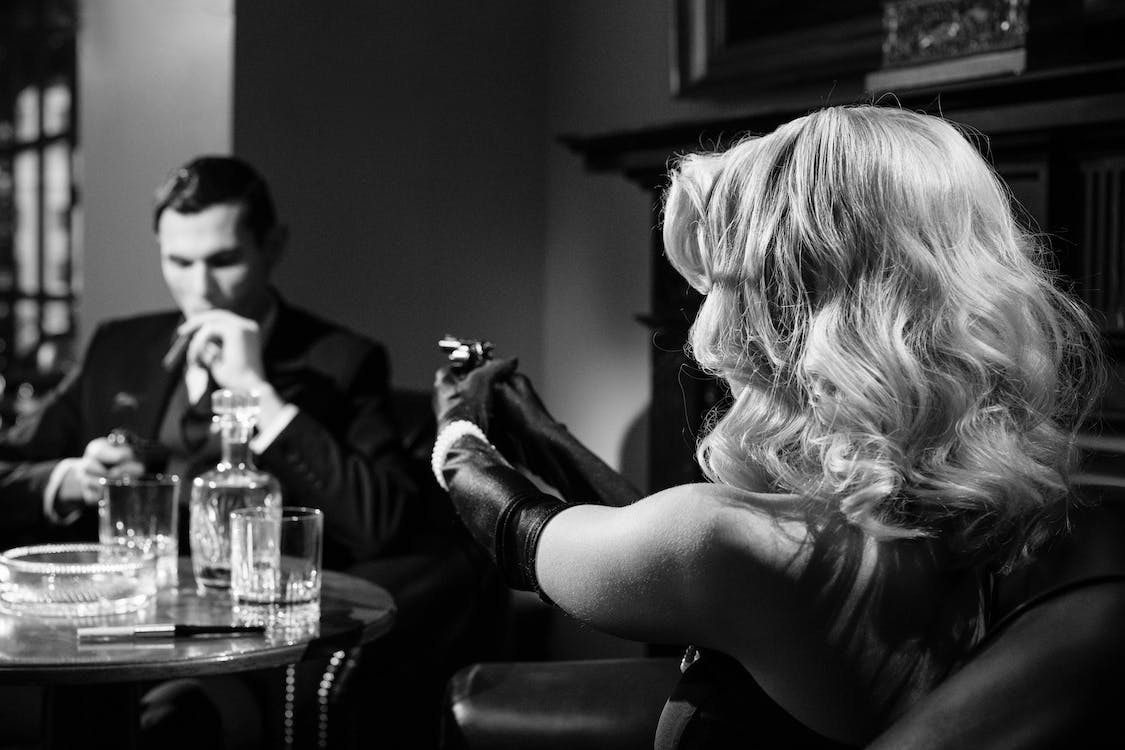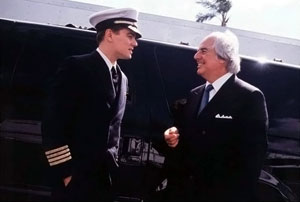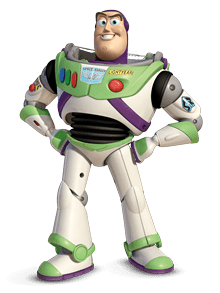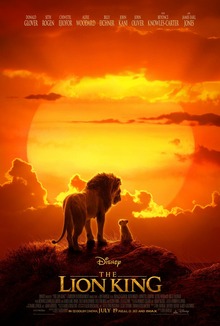Movies have been a beloved form of entertainment for over a century, captivating audiences with their stories, characters, and the magic of the silver screen. In the dimly lit theaters or the comfort of our own homes, we’ve laughed, cried, and been transported to far-off worlds, often feeling like we’ve seen it all. Yet, the world of cinema is far from mundane; it’s a treasure trove of hidden wonders and secrets that frequently elude our awareness. Beyond the actors’ performances and the dazzling special effects, movies are intricate tapestries woven together by the dedication and creativity of countless individuals. These cinematic masterpieces come to life through the vision of directors, the skill of cinematographers, the craftsmanship of set designers, and the talents of many others working tirelessly behind the scenes. Within this intricate web of creativity lies many surprising facts illuminating the filmmaking process and adding layers of intrigue to the stories we hold dear.
In this article, we embark on a captivating journey through the fascinating world of filmmaking, where we’ll unveil a collection of astonishing movie facts. These tidbits are like hidden gems waiting to be discovered, shedding new light on familiar films and inviting us to appreciate them in entirely novel ways. From the incredible serendipities that shape movie history to the quirky traditions that have developed on film sets, we will explore a wide array of movie-related curiosities that will leave you stunned and eager to revisit your most cherished cinematic experiences.
12 Mind-Blowing Movie Facts That Will Leave You Amazed
1. Titanic
It’s an intriguing tidbit from the making of the movie “Titanic” that might surprise you: James Cameron, the film’s director, was the one who sketched Rose in that iconic “draw me like one of your French girls” scene. Yes, you read that correctly! Cameron’s hands are the ones you see sketching Rose’s body in that memorable moment on the big screen. When this scene was filmed, Kate Winslet, who played Rose, wore a flesh-colored bodysuit. Later, in post-production, this bodysuit was digitally removed and replaced with the drawing that Cameron had personally created. This behind-the-scenes revelation adds an extra layer of fascination to the film, showing the director’s involvement in crafting one of its most iconic and sensual moments.
2. Gone Girl
In making the riveting thriller “Gone Girl,” a remarkable dispute unfolded between director David Fincher and lead actor Ben Affleck, centered around a seemingly inconsequential element—a baseball cap. During one critical scene, Fincher insisted that Affleck’s character wear a New York Yankees baseball cap. At the same time, Affleck, a devoted Boston Red Sox fan, vehemently opposed the idea of sporting the rival team’s emblem. This disagreement escalated to the point where the film’s production was halted for four days. Affleck’s Boston heritage and the city’s fervent allegiance to its sports teams, particularly the intense rivalry with the New York Yankees, made wearing the cap a point of contention. He reportedly told Fincher, “David, I love you, I would do anything for you, but I will not wear a Yankees hat. I just can’t. I can’t do it.” Ultimately, the standoff concluded when Affleck agreed to don a New York Mets cap instead, resolving the impasse and allowing the film’s production to continue. This captivating anecdote provides a glimpse into the dedication and creative tensions that can arise behind the scenes of a major movie production.
3. Catch Me If You Can
Have you ever watched Steven Spielberg’s masterful film, “Catch Me If You Can,” and wondered if you caught a glimpse of the real Frank Abagnale Jr., the ingenious con artist whose life the movie is based on? The film tells the thrilling story of how Abagnale Jr. assumed various false identities as a pilot, doctor, and lawyer while cashing millions in fraudulent checks before turning 21 and sneaking him into a surprising cameo. While the movie primarily centers around the relentless pursuit of Abagnale Jr. by FBI agent Carl Hanratty, portrayed by Tom Hanks, Spielberg added a playful twist to the title. Indeed, you “catch” the real Frank Abagnale Jr. in the film! He appears briefly as a French policeman who assists the character based on his younger self, played by Leonardo DiCaprio, into a police car. If you keep an eye on the end credits, you’ll spot his name, adding an extra layer of authenticity and intrigue to this captivating cinematic tale.
4. Now You See Me
“Now You See Me,” often celebrated for its lighthearted and playful take on the world of magicians, witnessed a harrowing incident behind the scenes that cast a shadow on its otherwise jovial atmosphere. Isla Fisher, cast as an escape artist among the illusionist ensemble known as The Four Horsemen, found herself in a life-threatening situation while filming a water tank scene. During the shooting, Fisher became unintentionally trapped inside the tank, struggling to break free. She desperately tried to signal for help from the crew, but they initially mistook her distress for a part of her acting. It wasn’t until precious moments had passed that they realized the gravity of the situation. Thankfully, a team of divers promptly intervened, saving Fisher from a potentially tragic outcome. She was rushed to the hospital and treated for injuries stemming from the incident. This unsettling occurrence revealed a significant oversight in their safety protocols: the absence of a predefined safety signal to distinguish a genuine emergency from a performance in such perilous scenes. It serves as a stark reminder of the real risks that can lurk behind the magic and illusion of the movies.
5. The Notebook
Ryan Gosling’s casting as Noah in “The Notebook” might seem surprising given his heartthrob status today, but there’s an intriguing twist to the story. The director, seeking a specific quality for the character, chose Gosling because he wanted someone who didn’t fit the conventional standards of handsome. Before he became the iconic romantic lead, Gosling was known to audiences for this role. His selection for the part was based on the unique charm he brought to the character, which was quite different from the typical leading man’s conventional good looks. This decision added an interesting layer to the casting process, proving that sometimes, it’s the distinctive qualities an actor brings to a role that truly defines the character and makes a movie memorable.
6. Toy Story
Buzz Lightyear’s iconic name almost underwent a significant change during the early stages of “Toy Story.” Initially, the character was conceived as “Lunar Larry,” a name that not only differed from the final choice but also hinted at a somewhat altered design. However, the creative team behind the film ultimately decided to pay homage to the real-life astronaut Buzz Aldrin. Buzz Aldrin, along with Neil Armstrong, made history on July 20, 1969, when they became the first two humans to set foot on the Moon during the Apollo 11 mission. In a nod to this remarkable achievement, the character’s name was changed to “Buzz Lightyear.” This decision honored a significant moment in space exploration history and added depth to the character, reflecting the spirit of adventure and exploration that defined both the toy and its real-life namesake.
7. Spiderman
In the 2002 movie “Spider-Man,” there’s an apparently simple scene where Tobey Maguire’s Peter Parker rescues his love interest, Mary Jane, as she slips inside their school cafeteria. What makes this scene stand out is the incredible effort it took to capture it. Mary Jane’s lunch goes airborne, but Peter, in his Spider-Man persona, swoops in to save the day, stopping her fall and catching all of her lunch items using her tray. Remarkably, this scene was not achieved through CGI (computer-generated imagery) or a compilation of various takes. According to the movie’s visual effects supervisor, John Dykstra, it took a staggering 156 takes to get it just right. That’s right, Tobey Maguire, who played Spider-Man, actually pulled off the feat himself after numerous attempts. Kirsten Dunst, who portrayed Mary Jane, corroborated this incredible effort, emphasizing that no CGI was involved. To help Tobey Maguire achieve this impressive feat, the tray he used was apparently affixed to his hand during filming, allowing him to skillfully catch all the lunch items. This dedication to capturing a seemingly innocuous scene showcases the commitment and attention to detail that often go into creating memorable moments in film.
8. The Dark Knight Rises
In “The Dark Knight Rises,” a subtle but intriguing scene unfolds during the inauguration of Batman’s statue. This particular moment is meticulously crafted, with characters strategically positioned to evoke the image of the Joker’s face. As the Batman statue is unveiled, the scene is filmed from a bird’s eye perspective, and fans have noticed striking visual cues: the spiral staircases represent the Joker’s distinctive hair, the arrangement of onlookers forms his eyes and mouth, and the Batman statue itself serves as his nose. While fans widely believe this clever arrangement is a hidden tribute to Heath Ledger, the actor who delivered an unforgettable performance as the Joker, director Christopher Nolan has never officially confirmed this intention. Nevertheless, Nolan is renowned for his meticulous attention to detail and skillful use of symbolism throughout his films. Ledger’s portrayal of the Joker remains one of the most iconic in cinematic history, earning him a posthumous Oscar for his outstanding performance. Tragically, Ledger passed away shortly after completing his work on “The Dark Knight,” adding a layer of poignancy to any potential tribute within the film.
9. The Lion King
In animated filmmaking, where every word and action is typically carefully scripted and planned, the story behind Nathan Lane’s improvisation in “The Lion King” stands out as a testament to the power of spontaneous creativity. During the recording sessions for the film, Nathan Lane, the voice of Timon, came up with a witty and unexpected line as he delivered his character’s dialogue. Timon’s humorous question, “What do you want me to do, dress in drag and do the hula?” was not part of the original script, but it had such an impact that it prompted the filmmakers to take notice. The filmmakers recognized the comedic potential of this improvised line, and it sparked their imagination. They embraced the idea fully and expanded it into a full-fledged song-and-dance routine, “Hakuna Matata,” featuring Timon and Pumbaa in grass skirts and coconut bras, performing a hilarious rendition of the hula dance. This sequence went on to become one of the film’s most iconic and beloved moments, celebrated for its humor and catchy musicality.
10. Django Unchained
In a memorable scene from “Django Unchained,” Leonardo DiCaprio’s character, Calvin Candie, flies into a rage and slams his hand onto a table, accidentally shattering a glass and injuring himself in the process. What makes this moment even more remarkable is that DiCaprio genuinely cut his hand during this incident. However, he stayed in the scene rather than breaking character and continued performing despite the injury. Director Quentin Tarantino was so impressed by DiCaprio’s unwavering commitment to the scene that he chose to include the unscripted moment in the final cut of the film. This decision added an unexpected layer of authenticity to the character and the scene. Notably, the impromptu action didn’t stop there. In another unscripted move, DiCaprio wiped his own blood on Kerry Washington’s face during the scene, further heightening the moment’s intensity. These unscripted and unrehearsed elements exemplify the actors’ and director’s dedication and talent, resulting in a truly unforgettable cinematic experience.
11. The Crow
In 1993, the tragic and untimely death of Brandon Lee, the son of legendary martial artist Bruce Lee and the star of “The Crow,” cast a dark shadow over the world of filmmaking. The fatal incident occurred during the filming of a scene in which a gang member shoots Lee’s character. The scene was supposed to involve the use of a prop gun firing blanks, a standard practice in filmmaking to create the illusion of gunfire. Tragically, a malfunction occurred with the prop gun, leading to a horrifying accident. A dummy cartridge that had been inadvertently left in the barrel was dislodged, and it struck Brandon Lee in the abdomen with a devastating impact. Despite immediate medical attention and multiple surgeries in an attempt to save his life, Lee succumbed to his injuries just days before the film’s production was scheduled to conclude. This heartbreaking incident serves as a sobering reminder of the risks and challenges that can unexpectedly arise in the pursuit of creating cinematic art, as well as the enduring legacy of an actor whose life was tragically cut short in the prime of his career.
12. The Lord of the Rings: The Two Towers
In “The Lord of the Rings: The Two Towers,” there’s a memorable scene where Viggo Mortensen’s character, Aragorn, vents his frustration by kicking a helmet, believing that Merry and Pippin have perished. What makes this scene particularly remarkable is the authenticity of Mortensen’s performance. Director Peter Jackson originally shot the scene four times, but he decided to give Mortensen one more chance. In that final take, which made it into the film’s final cut, Mortensen adds an extraordinary level of intensity. After kicking the helmet, he emits a prolonged, primal scream and collapses to his knees. The remarkable intensity in his performance is attributed to a surprising source: during that take, Mortensen actually broke two of his toes while kicking the helmet. Rather than letting the pain disrupt the scene, Mortensen channeled it into his portrayal of Aragorn, creating a moment of genuine emotional depth that resonates with audiences. This dedication to his craft and willingness to endure real pain for the sake of the performance exemplifies the level of commitment that actors like Mortensen bring to their roles in iconic films.
Conclusion
Our favorite films often hide unexpected gems within their frames. These moments, born from spontaneous acts or unforeseen accidents, wield a profound impact on the movies we hold close to our hearts. As we uncover these behind-the-scenes tales, our admiration for the cinematic artisans grows, and we applaud actors for their ability to adapt and shine in the face of unpredictability. These unplanned instances serve as a testament to the dedication and ingenuity of those who craft our cinematic experiences. They remind us that the magic of the silver screen frequently involves surmounting challenges and seizing unforeseen opportunities.





